Ditapis dengan

Scholars, travellers, and trade :the pioneer years of the National Museum of …
Today, the National Museum of Antiquities in Leiden is internationally known for its outstanding archaeological collections. Yet its origins lie in an insignificant assortment of artefacts used for study by Leiden University. How did this transformation come about? Ruurd Halbertsma has delved into the archives to show that the appointment of Caspar Reuvens as Professor of Archaeology in 1818 wa…
- Edisi
- -
- ISBN/ISSN
- 9780203634547
- Deskripsi Fisik
- xiv, 182p. : ill.
- Judul Seri
- -
- No. Panggil
- 069.09492 HAL s
Museums and memory
- Edisi
- -
- ISBN/ISSN
- 9780984644520
- Deskripsi Fisik
- viii, 239p.: ill.
- Judul Seri
- -
- No. Panggil
- -
- Edisi
- -
- ISBN/ISSN
- 9780984644520
- Deskripsi Fisik
- viii, 239p.: ill.
- Judul Seri
- -
- No. Panggil
- -

New horizons for Asian museums and museology
This book presents up-to-date information about museums and museology in present-day Asia, focusing on Japan, Mongolia, Myanmar, and Thailand.Asian countries today have developed or are developing their own museology and museums, which are not simple copies of European or North American models. This book provides readers with carefully chosen examples of museum activities—for example, exhibit…
- Edisi
- -
- ISBN/ISSN
- 9789811008863
- Deskripsi Fisik
- VI, 204 p.
- Judul Seri
- -
- No. Panggil
- 069.095 NEW n
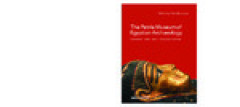
The Petrie Museum of Egyptian Archaeology:Characters and Collections
The Petrie Museum of Egyptian Archaeology first opened its doors in 1915, and since then has attracted visitors from all over the world as well as providing valuable teaching resources. Named after its founder, the pioneering archaeologist Flinders Petrie, the Museum holds more than 80,000 objects and is one of the largest and finest collections of Egyptian and Sudanese archaeology in the worl…
- Edisi
- -
- ISBN/ISSN
- 9781910634042
- Deskripsi Fisik
- 120 p.
- Judul Seri
- -
- No. Panggil
- 932.00744213 STE p

The Second World War in the Twenty-First-Century Museum :from narrative, memo…
The Second World War is omnipresent in contemporary memory debates. As the war fades from living memory, this study is the first to systematically analyze how Second World War museums allow prototypical visitors to comprehend and experience the past. It analyzes twelve permanent exhibitions in Europe and North America – including the Bundeswehr Military History Museum in Dresden, the Museum o…
- Edisi
- -
- ISBN/ISSN
- 9783110664416
- Deskripsi Fisik
- XIV, 354 p.
- Judul Seri
- -
- No. Panggil
- 943 JAE s
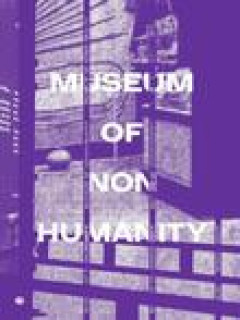
Museum of nonhumanity
Museum of Nonhumanity is the catalogue for a full-size touring museum that presents the history of the distinction between humans and animals, and the way that this artificial boundary has been used to oppress human and nonhuman beings over long historical periods. Throughout history, declaring a group to be nonhuman or subhuman has been an effective tool for justifying slavery, oppression, med…
- Edisi
- -
- ISBN/ISSN
- 9781950192120
- Deskripsi Fisik
- 281p.:
- Judul Seri
- -
- No. Panggil
- B105.A55 GUS m
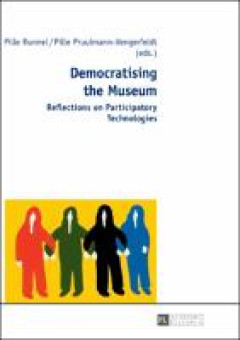
Democratising the museum :reflections on participatory technologies
Democratising the museum is a collection of articles reflecting upon the problem of how participation, technologically mediated or not, can support the museum in the process of becoming more accessible. The open museum shares power with its visitors while negotiating professionalism and the role of the museum in a modern society. The book looks at the roles and struggles of audiences/visitors a…
- Edisi
- -
- ISBN/ISSN
- -
- Deskripsi Fisik
- 240 p.
- Judul Seri
- -
- No. Panggil
- 069 DEM d
Transliterasi naskah AL-JUZ'U AR-RABI jIlid 1 :naskah koleksi Museum Negeri K…
Naskah Al-Juz’u Ar-Rabi’ (AJAR) ini merupakan karya terjemahan dari kitab Mukhtasar Ihya ‘Ulumuddin karangan Imam Al-Ghazali. Di dalam kitab AJAR ini, penyalin menulis dalam dua bahasa, yakni bahasa Arab dan bahasa Melayu. Pada tulisan berbahasa Arab diberi tanda kurung dan kemudian diterjemahkan ke dalam bahasa Melayu. Secara umum, naskah ini memaparkan jalan yang harus ditempuh untuk me…
- Edisi
- -
- ISBN/ISSN
- 9786232000209
- Deskripsi Fisik
- VIII, 144 p.
- Judul Seri
- -
- No. Panggil
- 091 LIM t
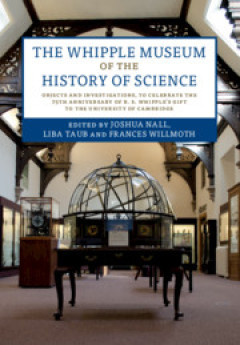
The whipple museum of the history of science :objects and investigations, to …
In this book the diverse objects of the Whipple Museum of the History of Science's internationally renowned collection are brought into sharp relief by a number of highly regarded historians of science in fourteen essays. Each chapter focuses on a specific instrument or group of objects, ranging from an English medieval astrolabe to a modern agricultural 'seed source indicator' to a curious col…
- Edisi
- -
- ISBN/ISSN
- 9781108633628
- Deskripsi Fisik
- xvii, 356 p. ; ill
- Judul Seri
- -
- No. Panggil
- 502.84 NAL t

Museum activism
Only a decade ago, the notion that museums, galleries and heritage organisations might engage in activist practice, with explicit intent to act upon inequalities, injustices and environmental crises, was met with scepticism and often derision. Seeking to purposefully bring about social change was viewed by many within and beyond the museum community as inappropriately political and antithetical…
- Edisi
- -
- ISBN/ISSN
- 9781351251044
- Deskripsi Fisik
- xxix, 406 p. : ill.
- Judul Seri
- -
- No. Panggil
- 069 JAN m
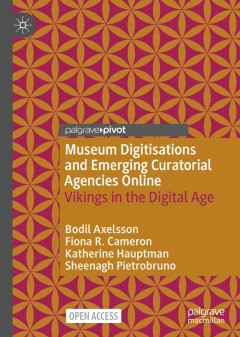
Museum digitisations and emerging curatorial agencies online :vikings in the …
This open access book explores the multiple forms of curatorial agencies that develop when museum collection digitisations, narratives and new research findings circulate online. Focusing on Viking Age objects, it tracks the effects of antagonistic debates on discussion forums and the consequences of search engines, personalisation, and machine learning on American-based online platforms. Furth…
- Edisi
- -
- ISBN/ISSN
- 9783030806460
- Deskripsi Fisik
- xv, 138p ; ill
- Judul Seri
- -
- No. Panggil
- 069.53 MUS m
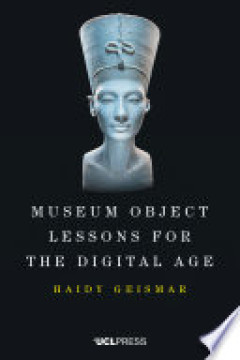
Museum object lessons for the digital age
Museum Object Lessons for the Digital Age explores the nature of digital objects in museums, asking us to question our assumptions about the material, social and political foundations of digital practices. Through four wide-ranging chapters, each focused on a single object – a box, pen, effigy and cloak – this short, accessible book explores the legacies of earlier museum practices of colle…
- Edisi
- -
- ISBN/ISSN
- 9781787352810
- Deskripsi Fisik
- XV, 141 p.
- Judul Seri
- -
- No. Panggil
- 069.5 GEI m
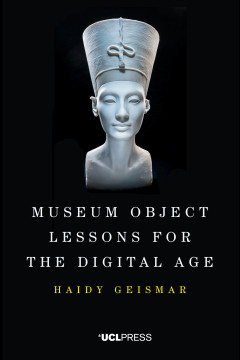
Museum object lessons for the digital age
Museum Object Lessons for the Digital Age explores the nature of digital objects in museums, asking us to question our assumptions about the material, social and political foundations of digital practices. Through four wide-ranging chapters, each focused on a single object – a box, pen, effigy and cloak – this short, accessible book explores the legacies of earlier museum practices of colle…
- Edisi
- -
- ISBN/ISSN
- 9781787352810
- Deskripsi Fisik
- xv, 139 p. ill;
- Judul Seri
- -
- No. Panggil
- 069.5 MUS H
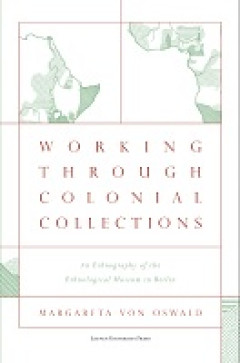
WORKING THROUGH COLONIAL COLLECTIONS :an ethnography of the ethnological muse…
Reckoning with colonial legacies in Western museum collections What are the possibilities and limits of engaging with colonialism in ethnological museums? This book addresses this question from within the Africa department of the Ethnological Museum in Berlin. It captures the Museum at a moment of substantial transformation, as it prepared the move of its exhibition to the Humboldt Forum, a new…
- Edisi
- -
- ISBN/ISSN
- 9789462703100
- Deskripsi Fisik
- 321p.; ill.
- Judul Seri
- -
- No. Panggil
- 301 WOR v

WORKING THROUGH COLONIAL COLLECTIONS :an ethnography of the ethnological muse…
Reckoning with colonial legacies in Western museum collections What are the possibilities and limits of engaging with colonialism in ethnological museums? This book addresses this question from within the Africa department of the Ethnological Museum in Berlin. It captures the Museum at a moment of substantial transformation, as it prepared the move of its exhibition to the Humboldt Forum, a new…
- Edisi
- -
- ISBN/ISSN
- 9789462703100
- Deskripsi Fisik
- 321p.; ill.
- Judul Seri
- -
- No. Panggil
- 301 WOR v
 Karya Umum
Karya Umum  Filsafat
Filsafat  Agama
Agama  Ilmu-ilmu Sosial
Ilmu-ilmu Sosial  Bahasa
Bahasa  Ilmu-ilmu Murni
Ilmu-ilmu Murni  Ilmu-ilmu Terapan
Ilmu-ilmu Terapan  Kesenian, Hiburan, dan Olahraga
Kesenian, Hiburan, dan Olahraga  Kesusastraan
Kesusastraan  Geografi dan Sejarah
Geografi dan Sejarah